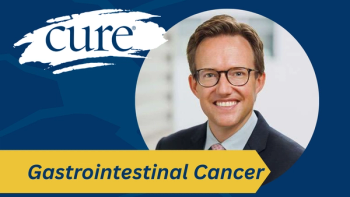
- Genitourinary Cancers Special Issue 2020
Treatments for Men Whose Prostate Cancer Has Spread and Become Resistant to Hormonal Therapy are Growing

Key Takeaways
- Advanced prostate cancer treatment options have expanded, including hormonal therapies, chemotherapies, PARP inhibitors, and radioisotopes.
- Treatment adherence is critical, with challenges in oral medication compliance and financial burdens affecting patient outcomes.
A growing number of treatments are available to men whose prostate cancer has spread and become resistant to hormonal therapy.
When a man receives a diagnosis of prostate cancer, Dr. Charles Ryan has two immediate questions: Has it spread outside of the prostate and, if so, is it resistant to the hormonal therapy typically used to treat the disease?
“When we talk about a patient with a life-threatening form of prostate cancer, those
are typically patients who have both of those phenomena,” said Ryan, director of the Division of Hematology, Oncology and Transplantation at the Masonic Cancer Center of the University of Minnesota in Minneapolis. “The cancer spreads to the bone, and standard hormonal therapy stops being effective, so the cancer begins to grow despite the lowering of testosterone.”
While those cancers, known as castration-resistant or hormone-resistant, represent the most advanced stage of the disease, the good news is that there are numerous ways to treat such cases, Ryan told
CURE®: What kinds of therapies are available to treat prostate cancer that has spread?
Ryan: We can divide them into three or four categories. With hormonal therapy, the standard of care would be some form of ablation of the level of testosterone in the body (because testosterone fuels the cancer). We typically do this with injections that lower the level of testosterone by about 90%. The most commonly used drugs would be leuprolide (Lupron Depot), degarelix (Firmagon) and goserelin (Zoladex).
On top of that, we have targeted hormonal therapies that block the effect of testosterone even when the first line of therapies has failed. And that’s where we have drugs like enzalutamide (Xtandi), abiraterone (Zytiga), apalutamide (Erleada) and darolutamide (Nubeqa).
Compared with some other cancers, we use relatively little chemotherapy, but we do have some very effective chemotherapies. Docetaxel can be used in advanced hormone-resistant disease or as an initial therapy for metastatic disease. And we have a drug called cabazitaxel, which is similar.
The new class of drugs that we’re using now is the PARP (poly-ADP ribose polymerase) inhibitors, which target the mechanism of DNA repair (making it harder for cancer cells to repair themselves when damaged; these are used in patients whose cancers are already deficient in this ability due to gene mutations). In addition, we have a cellular therapy called sipuleucel-T, which is used in castration-resistant, metastatic disease. Finally, we have a radioisotope called radium-223, which is used in disease that has spread to the bone, causing bone pain.
Do patients have trouble sticking with any Q of these regimens, and, if so, what kinds of problems can that cause?
Treatment adherence has to do with whether the prescribed medication actually gets into the patient. Adherence for injected drugs is, of course, high; if a patient shows up and has the drug injected, adherence is almost 100%. But with oral drugs, we can lose adherence for a number of reasons. One is that a patient could take a bottle of pills home, put it in his medicine cabinet and never take it. Or, it could be that a patient starts to take a medication and because he doesn’t feel so good, he stops taking it. We would want to hear about that, why he doesn’t feel well and whether we could reduce the dose or give him a treatment break. As oncologists, that’s our job.
But the reality is that all the research in the world that leads to the development of a new therapy isn’t effective if we don’t get it into the patient. So, it’s sort of a dialogue between the doctor and the patient about what can or cannot be administered and why. It may not be just one factor.
Unfortunately, a problem in this country is that patients sometimes bear a lot of the cost of their medication, so not being able to pay would be one (reason) for a patient not adhering to the treatment regimen. And that is something that I, as a doctor, would want to hear about, because we can think about patient assistance programs if they exist in your area, or we can think about ways we can reduce the dose to allow us to effectively deliver the drug, but perhaps on a slightly more cost-effective schedule.
How do treatment side effects impact the quality of life for patients?
The major driver of quality of life in advanced prostate cancer is the efficacy of the therapy, and this has been shown, for example, with chemotherapy. Many men might think, “Well, chemotherapy is going to be associated with a very poor quality of life.” But that didn’t bear out in a study that was done many years ago, in which patients (newly diagnosed) with metastatic disease were treated with standard hormonal therapy with or without chemotherapy.
The patients who were on the chemotherapy had a slightly lower quality of life after about three months of treatment, but after 12 months of starting treatment, the patients who had received the chemotherapy had a better quality of life. And that was because 12 months after starting the treatment, the patients had already been done with the treatment for six months. They were less likely to have their cancer worsening, and better cancer control leads to better quality of life.
What treatments are being tested in clinical trials that might eventually become options for men with advanced prostate cancer?
I would put clinical trials into one of two categories. The first would be optimization studies using therapies that exist, but maybe we’re testing them in an earlier disease population, or looking for a better outcome by giving it to a patient with a lower volume of disease.
For example, there are studies of enzalutamide and abiraterone, commonly used drugs that, when first approved, were given to patients who had received all (available) prior therapies and chemotherapy. But then we showed that we could give them to patients with castration-resistant prostate cancer who did not have chemotherapy, and then to patients (who were) newly diagnosed, and the outcomes were better than giving standard hormonal therapy alone.
Now, studies are looking at patients who do not have metastatic disease. This is where we’re going with prostate cancer therapies: Optimizing their use, moving them earlier in the disease spectrum and maybe changing doses.
The next type of clinical trial would be (one that uses) new therapies and new approaches. One would be the PARP inhibitors, which are relatively new. The two that are approved currently are called Lynparza (olaparib) and Rubraca (rucaparib).
The second category that’s really exciting is PSMA (prostate-specific membrane antigen) targeted therapies, and we have one that’s looking really interesting. It’s a molecule that targets PSMA (a protein in prostate cancer cells that fuels the disease), which arises from a very common mutation of a gene called PTEN. On one end, the treatment binds the PSMA, and on the other end, it has a sort of molecular basket.
In this basket, you can put a molecule: In this case, it’s the radioisotope lutetium-177. The targeted treatment sort of hand delivers the radiation therapy to the prostate cancer cell. And that looks really interesting and could get FDA (Food and Drug Administration) approval in the next few months or year.
There’s another less-known, genetic-based therapy being studied, a drug that targets a molecule called AKT (generated by a fairly uncommon) mutation. If that mutation is there, then this AKT is activated and stimulating the cancer, and the drug blocks it. We might hear data on that in the coming year, and it could become available, most likely, in the advanced castration-resistant metastatic setting.
What will all this progress mean to patients?
We started maybe 20 years ago thinking about this idea of personalized medicine and targeted therapies, and we’re kind of there. We’re not quite there totally, because we’re not at the point where every patient has some unique profile that leads to a special cocktail of treatment. I think that’s still a little bit far off, but we are seeing the beginning of this process.
If patients want more information or support, where can they turn?
I would first recommend that patients go to the website of
ZERO is not only an informative website, it’s also an advocacy organization. ZERO also has an annual meeting that patients can attend. I’ve spoken at it the last couple of years, and I have a number of colleagues who have, and there’s a lot of information there.
I would also recommend looking at the National Cancer Institute’s
And then, finally, the
Articles in this issue
over 5 years ago
Detecting Prostate Cancer Without Overtreatment Is Difficultover 5 years ago
While Penile Cancer is Rare, Men Should Be Aware



